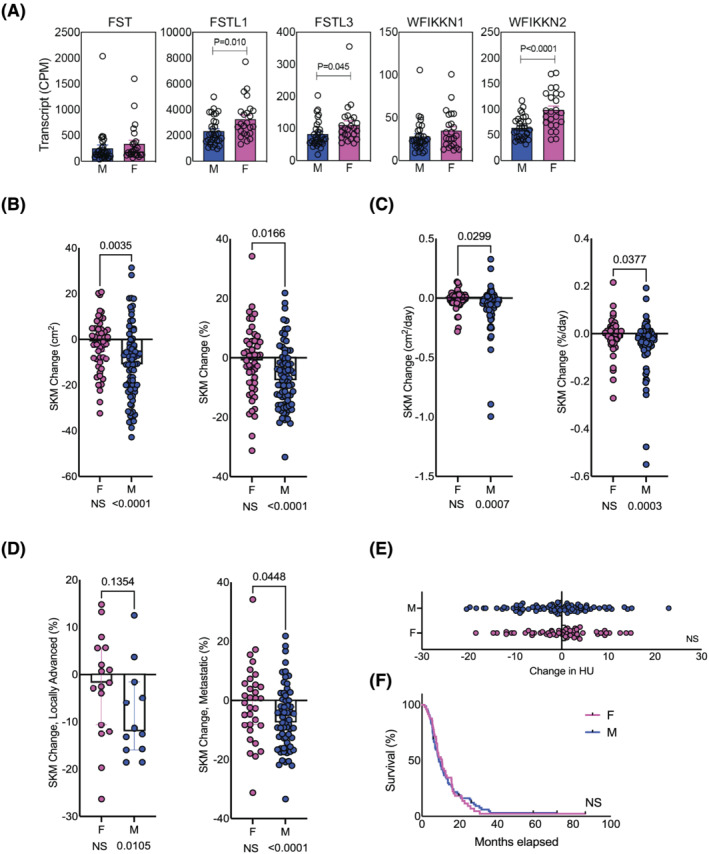Figure 6.

Sexual dimorphism in Activin inhibitor expression (A) and cachexia phenotype (B–F) in two cohorts of patients with PDAC. (A) Cohort 1 shows sex differences in the endogenous inhibitors of the Activin family ligand in the muscles of PDAC patients. Muscle specimens obtained from patients undergoing surgery for pancreatic cancer at Indiana University [n = 31 males (M); n = 24 females (F)] were subjected to RNAseq. FSTL1, FSTL3, and WFIKKN2/GASP2 were more abundant in females. (B–F) Measurement of muscle area in Cohort 2, 124 patients with usable CT scans treated with first‐line gemcitabine/nab‐paclitaxel at Indiana University, shows (B) greater loss of skeletal muscle area and percentage area and (C) greater rate of skeletal muscle loss in men vs. women in the entire cohort. (D) The subset of patients with locally advanced disease at treatment onset showed no difference; however, those with metastatic disease demonstrated sexually dimorphic muscle loss, which was greater in males. (E) Change in skeletal muscle radiodensity was not different between the sexes, nor was survival (F).
